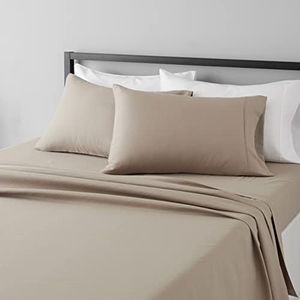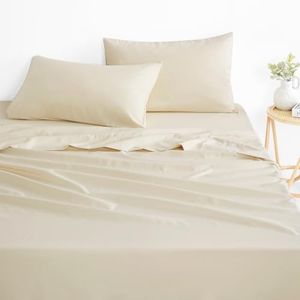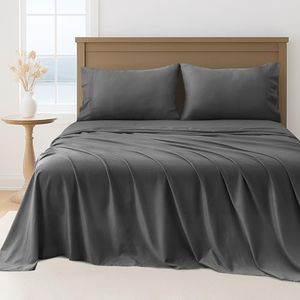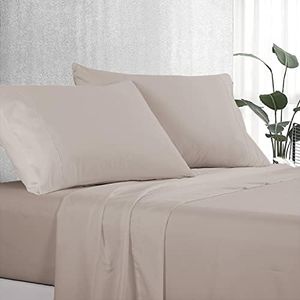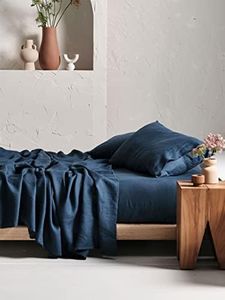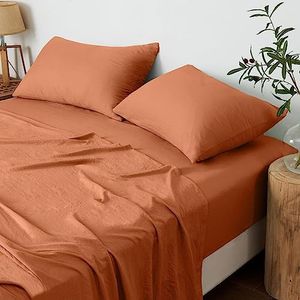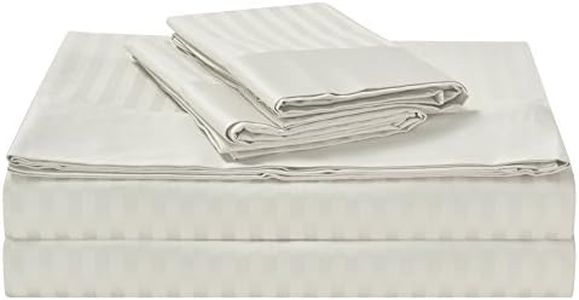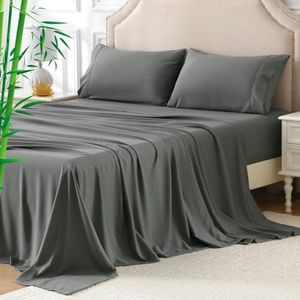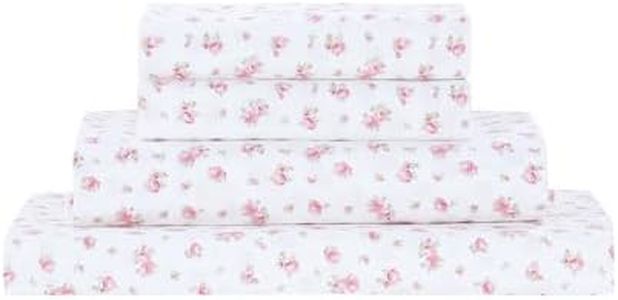We Use CookiesWe use cookies to enhance the security, performance,
functionality and for analytical and promotional activities. By continuing to browse this site you
are agreeing to our privacy policy
10 Best Non Pilling Bed Sheets
From leading brands and best sellers available on the web.Buying Guide for the Best Non Pilling Bed Sheets
Choosing bed sheets that resist pilling is crucial for both comfort and long-term durability. Pilling occurs when little fabric balls form on the surface of the sheet, resulting from friction or washing. These pills can make sheets feel rough and less pleasant to sleep on. Knowing which features to look for can help you find bed sheets that remain smooth and inviting over time.Fabric MaterialThe type of material used in bed sheets plays a big role in whether they will pill. Natural fibers like cotton—especially long-staple varieties such as Egyptian or Pima cotton—are less likely to pill compared to synthetic fibers. While blends of cotton and polyester can pill more easily, tightly woven or high-quality synthetics may also resist pilling. If your main concern is smoothness and longevity, opting for sheets made from long-staple cotton is a safe bet. Think about how much you prioritize a natural feel versus easy care when choosing a material.
Weave TypeWeave refers to how the threads are interlaced to make the sheet, and it impacts both feel and resistance to pilling. Sateen and percale are two common weaves. Percale is tightly woven and crisp, making it resistant to pilling, while sateen weaves are softer and have a subtle sheen but can pill if not made from high-quality fibers. For people who want sheets that are both crisp and long-lasting, percale is an excellent choice; sateen is preferable for those who love softness and gentle drape, as long as the fiber quality is high.
Thread CountThread count refers to the number of threads woven into one square inch of fabric. While a higher thread count often means a smoother and more durable sheet, thread counts that are excessively high may rely on twisted or lower-quality fibers, which can actually increase pilling. Look for a moderate, genuine thread count—typically between 200 and 400 for percale and 300 to 600 for sateen—rather than focusing solely on the highest number. Match the thread count to your preference for feel: crisp and cool, or smooth and thick.
Staple LengthStaple length refers to the length of the individual fibers used to make the fabric. Longer staples (such as those in Egyptian or Pima cotton) produce smoother, stronger yarns, which greatly reduces the chance of pilling. Short-staple cottons, on the other hand, are more prone to breakage, leading to pills over time. If your primary goal is non-pilling, always check if your sheets specify long-staple cotton.
Care InstructionsHow you care for the sheets can affect their tendency to pill. Some sheets require gentle washing and lower heat to preserve their surface. If you want sheets that retain their look and feel with regular use, double-check care instructions—sheets that specify gentle cycles and mild detergents are less likely to pill, but you’ll need to decide if you’re willing to invest the effort into following these recommendations.
